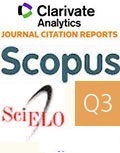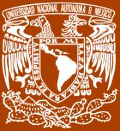Lithostratigraphy and microfacies analysis of Middle-Late Eocene Pila Spi Formation in Sheikh Turab section, Kurdistan region of Iraq
Litoestratigrafía y análisis de microfacies de la Formación Pila Spi del Eoceno medio-tardío en la sección Sheikh Turab, Kurdistán de Irak
Irfan Sh. Asaad1,2,*, Aland M. Ahmed3, Sardar M. Balaky4
1 Department of Earth Sciences and Petroleum, College of Science, Salahaddin University-Erbil, Erbil, Kurdistan Region, Iraq.
2 Department of Petroleum Engineering, College of Engineering, Knowledge University, Erbil, Iraq.
3 Survey Department, Technical Institute-Akre, Akre University for Applied Sciences, Akre, Kurdistan Region, Iraq.
4 Department of Petroleum Geosciences, Faculty of Science, Soran University, Soran, Kurdistan Region, Iraq.
Corresponding author: (I.S. Asaad) This email address is being protected from spambots. You need JavaScript enabled to view it.
How to cite this article:
Asaad, I.S., Ahmed, A.M., Balaky, S.M., 2024, Lithostratigraphy and microfacies analysis of Middle-Late Eocene Pila Spi Formation in Sheikh Turab section, Kurdistan region of Iraq: Boletín de la Sociedad Geológica Mexicana, 76 (3), A220524. http://dx.doi.org/10.18268/BSGM2024v76n3a220524
Manuscript received: February 22, 2024; corrected manuscript received: May 10, 2024; manuscript accepted: May 20, 2024.
ABSTRACT
The Middle-Late Eocene Pila Spi Formation in the Sheikh Turab section at the southern limb of the Safin Anticline in the northern Iraq (Kurdistan region) is studied to clarify the stratigraphy, realize the depositional environment using facies analyses, and offer insights into the sedimentological evolution of the Middle-Late Eocene succession. The formation has a total thickness of 92.5 m, was examined using section description and logging in addition to sample collection at one outcrop locality. The field descriptions of the formation revealed three lithostratigraphic units composed of marly limestone, dolomitic limestone, chalky limestone, and marl, with different bed sets and thicknesses. The petrographic analysis of the carbonate samples also identifies three main microfacies, namely mudstone, wackestone, and packstone, with their subdivisions. They are categorized into one facies association in accordance with their environmental interpretation. According to the facies analysis, the studied formation was deposited in a shallow marine, subtidal, semi-restricted lagoon setting. This environment indicated a vertical gradient from the underlying molasses facies of the Gercus formation to more marine carbonate facies in the subtidal setting. It is also deduced that transgression of the Tethys Sea covered the studied area since the middle Eocene until the Late Eocene, creating favorable accommodation for carbonate production and sedimentation.
Keywords: Eocene, microfacies, Lithostratigraphy, Pila Spi, Sheikh Turab.

